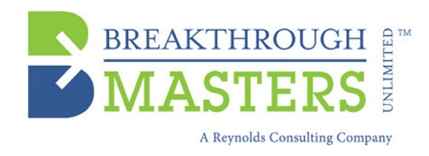Huh? Most of us associate growth with big ideas, big schemes, and big transformations. That is not untrue. But the big transformations are more likely to be to the mindset of leadership than to the activities of the organization. It took me a while to figure it out, but scalable companies aren’t necessarily smarter or better, but they are more focused. It seems counterintuitive but the secret to success is less is more.
Here is how that works. When a company is clear on strategy (and clarity requires passing the test of knowing what you won’t do), it can use that to prioritize work down to a desktop level. If work isn’t helping accomplish the big picture specifically, does it need to be done? Applying the best resources where your firm anticipates getting the biggest return means you can accomplish your goals with less total time and money spent.
When working in a corporate setting I can remember the start of yet another big company-wide initiative that was supposed to revolutionize work through grass roots simplification. It was called Continuous Improvement. It is still considered valuable today in many corporate cultures. And it can be. However, in this instance, the process of setting up the infrastructure, assigning teams, conducting the training, and trying to change historical patterns went nowhere. It was a three-year exercise, not a change in mindset. Why? Because the focus and resulting culture of the organization didn’t change. Continuous Improvement became a complicated project layered on top of an existing culture and most people had the attitude “this too shall pass.” Complexity, even with good intentions, slows things down.
Another obstacle is that what works isn’t always what is done. Consider the concept of sabermetrics. It has always been one of my favorites as both a baseball fan and a believer in data-driven decisions. Essentially it is the empirical analysis of baseball, especially baseball statistics that measure in-game activity. One famous outcome, captured in the movie Moneyball, is that the statistic that most correlated with winning games, was the unsung hero of “on-base-percentage.” One of the least favorite of big-name players, coaches, and recruiters. OBP as it is known tracks how often a player gets on base and not how they get on base. Most players with high OBP do the least exciting thing—they walk a lot. Not nearly as likely to drive fans to games as big-time home runs. What may be less obvious is that you can’t score unless you get on base so the more times you do that, the more runs scored, and you must score to win. This discovery should have changed the world of baseball—but it didn’t. The industry didn’t like it. It didn’t fit their long-held assumptions and they have not deployed it as you would expect. Hard data is rejected while deferring to historical beliefs. Check out this previous blog!
And the real kicker? Most companies don’t even have a strategy let alone a clear one. They have departmental goals, sales targets, and a list of activities to make the company better. But those aren’t a strategy. They may make the company better…or not. Statistics say that less than one in four of those activities succeed. Case in point: Continuous Improvement example above. It is hard to be successful in an organization without a shared strategy that is unifying, inspiring and a recurring drumbeat defining the investments and activities of the entire company.
So, what does focus look like? It means making a choice when selecting a strategy—not to be everything to all customers but something special to a group of them. You can have the best product, a select group of target customers, or the lowest price—but you can’t have all three. You can be Lexus, USAA, or Walmart but they are night and day in how they operate their businesses, what their skill sets are and where they invest. Focus means choosing the way you position the company to reach your potential (not to be better at what you already do) and leverage your strengths in the process. Over time that focus just makes you better and better at what you do, makes it easier to scale, and separates your company from others in your space.
There are two key things every leader must do to achieve focus—and it’s not easy! If it was, most firms would have Breakthrough Growth:
- Choose. The leaders must define a vision of the organization that outlines a path for growth. You can’t choose a little of everything. You can’t just be a little better at a few things. You must choose! That takes a lot of data to show you where the intersection of the market and your business strengths will provide the best return and give the leaders enough confidence to act.
- Avoid what some refer to as “addition sickness”. That terminology came from an article titled “Rid your Organization of Obstacles that Infuriate Everyone,” by Sutton and Rao and published in the Jan/Feb issue of Harvard Business Review. The authors figured out that the human default is to ask, “What can I add?” and not “What can I get rid of?”. One university president asked students for suggestions on improvements. Only 11% of responses were subtracting things. We get rewarded with big ideas not the discipline of maintaining the drum beat of strategy. And we have pet projects and shiny syndrome which has untold impact on the capacity to do what really matters. One company saved thousands of hours simply by changing the default mechanism on meeting calendars from 30 minutes to 15 minutes.
After decades of doing strategic acceleration work, I can ensure you of two things:
- Every organization can grow bigger and faster than they think they can. Most of the clients I have worked with over the years were able to work in x factors of growth not % factors. Our goal is no less than 2x in three years.
- The way to do it is to focus—or narrow what you are trying to do but do it better and on a larger scale than you thought possible. Define what “potential” looks like, then figure out what is essential to get there from here. Leaders then spend most of their time being sure everyone knows where the organization is going and their role in helping it get there while streamlining and/or eliminating distractions.
The secret: Less is more and the discipline to stay the course.

